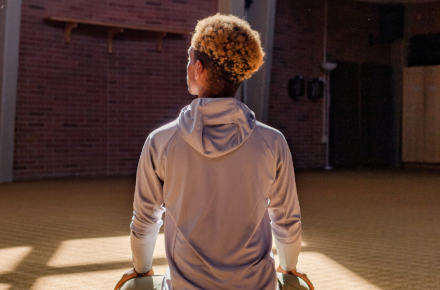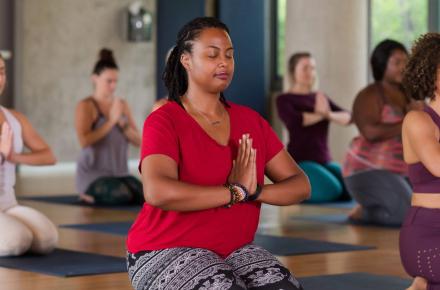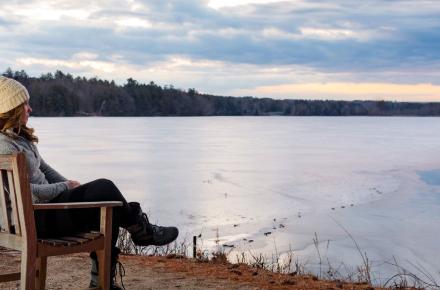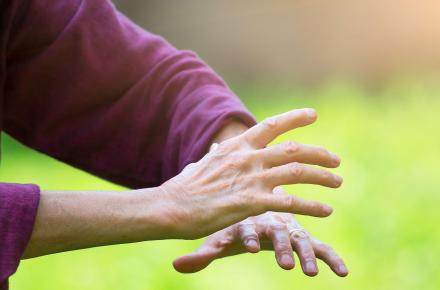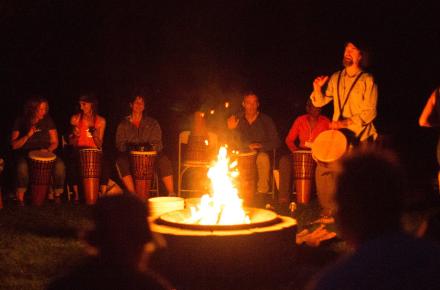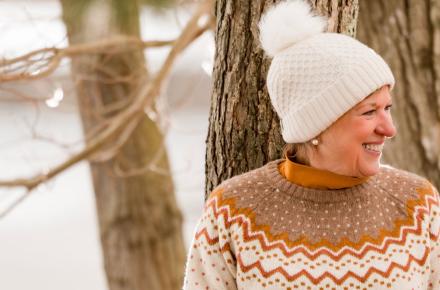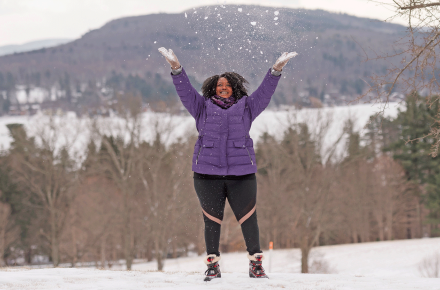Adapting Yoga Postures for Older Practitioners
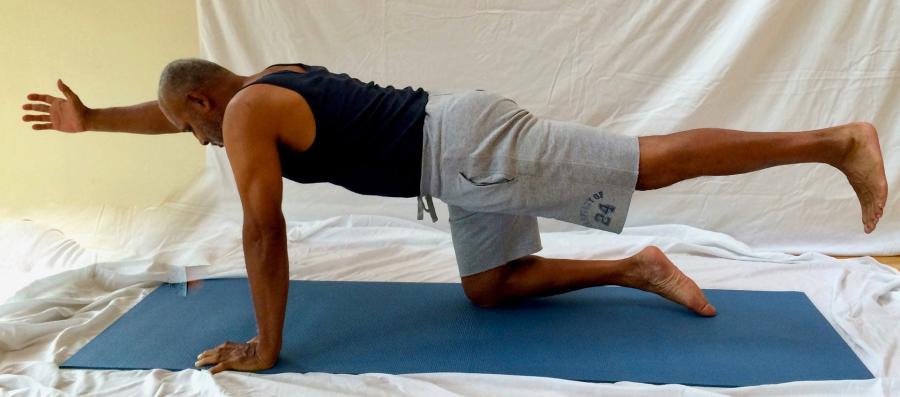
by Kimberly Carson and Carol Krucoff
Yoga classes are commonly taught to build toward a “peak” pose, which is often quite challenging, by doing a series of postures that prepare the body to perform this difficult pose. If a participant is unable to do the “full expression” of any pose along the way, modifications are generally offered.
Underlying this structure are two unspoken implications that we find problematic in working with older adults. First is the inference that advancing in yoga means doing increasingly more-difficult postures. If this were true, having the physical ability to perform for an acrobatic circus company would somehow equal the spiritual wisdom and maturity of a master yogi such as Paramahansa Yogananda. Second is the notion that there is one “real pose,” which implies that any variation is somehow less valid. This, in turn, suggests that the person requiring a modification is not doing “real yoga.”
Our approach is quite different. Rather than presenting an ideal form, then suggesting modifications for those unable to “achieve” this pose, we begin with a variation that is accessible to every student. Then we invite those who would like a little more challenge to move into a more-demanding variation, being careful to make it clear that this more-difficult posture is just a suggestion and not necessary or expected. In other words, we adhere to the understanding that any posture can be “advanced” if it facilitates connecting to presence, awareness, and love. This is, after all, a central tenet of the yogic teachings: SatChitAnanda (being, consciousness, bliss), which describes the essential nature of all things. Every physical gesture is a valid opportunity for growth and clarity; wherever someone needs to be is fine, for in that moment that is the truth of things.
Given that there is not only a wider range of abilities in the senior age group than any other—and the potential risk for compromise is also greater—it becomes essential to be able to adapt postures in an informed way. We have created a method called the Continuum of Practice to help yoga teachers learn how to make skillful adaptations of postures to suit individual needs. This model is based on the recognition that movement occurs along a continuum: from stillness to muscle activation to moving one or more body parts in one or more directions. It is our belief and practice that any person can do some component of any yoga pose along this continuum. This allows us to truly meet students where they are—whether they’re sitting in a wheelchair or training for a marathon. Using this method, modifying any pose to fit any student begins by identifying three things:
- The intention of the pose: Do we practice this pose to strengthen the core, enhance flexibility of the hips, stretch the back of the legs, or maybe all three? Define the purpose for why you are doing a particular posture.
- The risks of the pose: Could this pose put pressure on the knees, cause someone to fall, or strain the wrists? Determine the potential problem points in the posture.
- The specific limitations of an individual student: Did this person have a hip replacement three months ago? Is she on medication that makes her dizzy? Is he in persistent pain? Be clear about the specific issues of a particular student so you can decide how to meet some or all of the intentions while minimizing risks.
As teachers begin to consider the “canon” of yoga asanas from this perspective, it may require some “deconstruction”—that is, viewing each posture in terms of specific benefits and risks. And it typically fosters creativity, as teachers may need to think outside the box to bring a particular intention (for example, building arm strength) to a student whose limitation may be needing to stay in a wheelchair. The teacher’s responsibility is to integrate the movements that will be helpful for the student and determine where the risky points of the asana may be, given the specific challenges a given student may have. This integration, in turn, allows instructors to skillfully and safely guide their senior students.
Here is an example of how to use this technique:
Posture: Warrior I
Intention of the Pose
Balance
Leg strength
Spinal extension
Hip rotation
Knee mobility
Risks of the Pose
Knee-toe alignment, knee injury
Shoulder pain or injury
Falling, if someone has poor balance
Stamina required to sustain large muscle pattern and arms over head
Specific Limitations of an Individual Student
If a student can’t raise the arms overhead: The palms could be placed together in front of the chest, in “prayer” position.
If a student is unsteady: The posture could be done with the back heel pressed against the wall or standing next to a chair that can be lightly touched for balance.
If a student is in a wheelchair: They can sit tall toward the front of the chair and raise the arms overhead.
The imperative to “meet students where they are” might mean that not all of the intentions will be able to be met in the new variation. Instead, it may be necessary to focus on a subset of intentions—maybe even just one or two—from the original posture. This reorientation of perspective may render the final appearance of the posture quite different from how it looks in a popular yoga publication. For example, a frail older adult practicing in a chair may need movement options for hip mobility that do not match the “idea” of Warrior I. The question now becomes, “Is it helping a student ‘achieve’ a particular posture itself, or is it finding awareness and ease that is the goal?”
Although the Continuum of Practice seems like a relatively simple scaffolding for working with older adults (or others with physical challenges), it requires practice to apply it with confidence and finesse when teaching individuals and/or a complex class of older adults.
Reprinted with permission from New Harbinger Publications, Inc. © 2016, Kimberly Carson and Carol Krucoff.

























